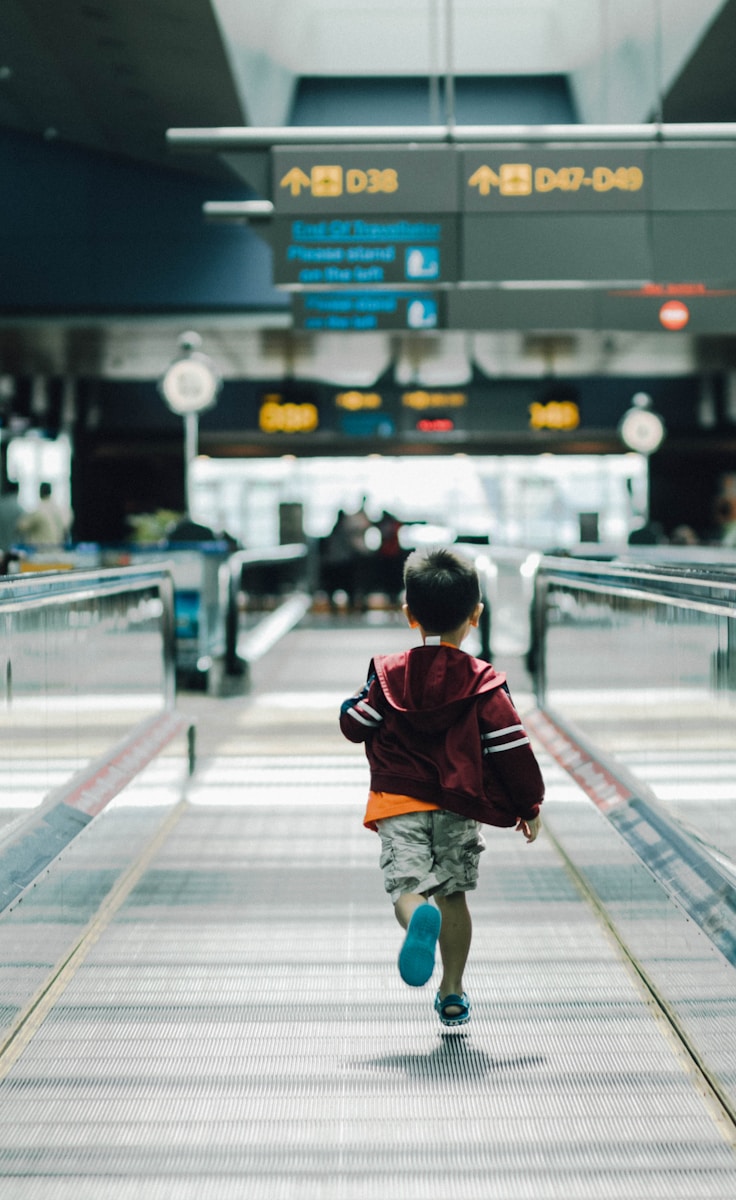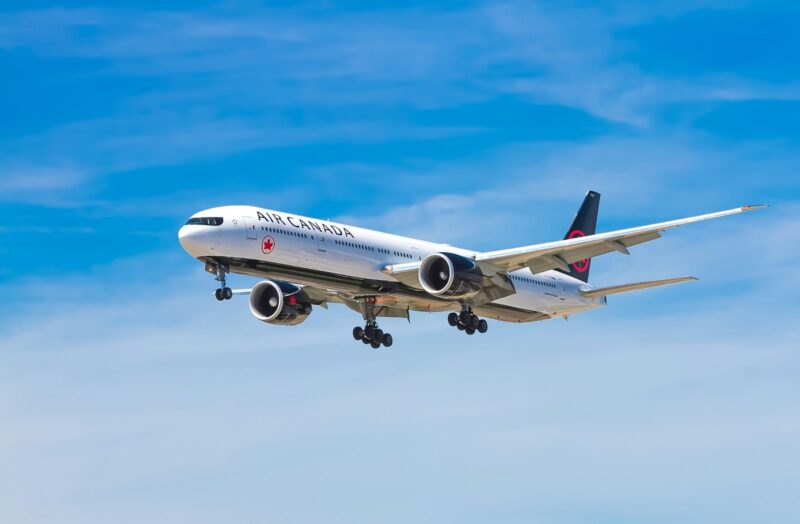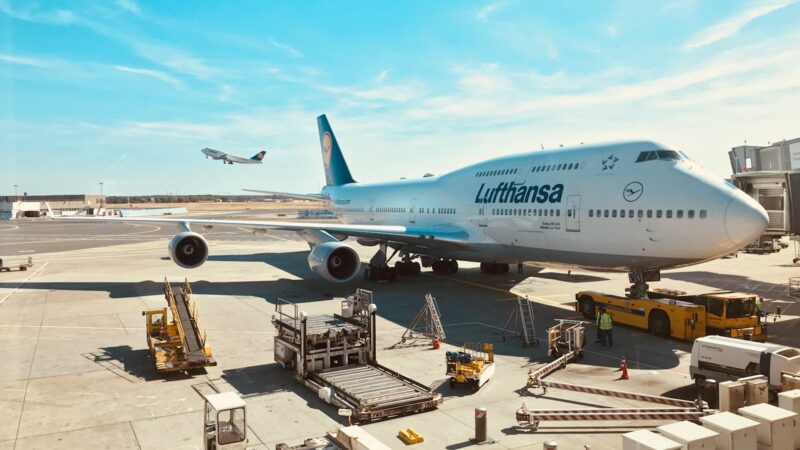Table of Contents
ToggleQuick Key Tips for Flying with Young Children
- Preparation is Key: Ensure a smooth trip by planning ahead.
- Choice of Airline: Some airlines offer discounted fares for children on domestic flights.
- Passport Requirements: A passport is needed for infants on international travel.
- Child Fares: Confirm whether your airline requires a ticket for your infant.
- Flying Internationally: Additional documentation may be necessary when one parent or a non-parent is accompanying the child.
- Child Safety: The safest method for your baby to travel is by using an FAA-approved restraint.
- Stay Calm: It’s normal for babies to cry; it’s okay to be nervous.
Tips for Traveling with Infants and Toddlers
Understanding Infant and Toddler Airline Policies
Before flying with your baby, review each airline’s specific regulations for infant travel. Notifying the airline about bringing your infant on board is crucial, as ticketing policies vary with age and may influence seating.
Selecting Optimal Travel Times for Flying with Young Children
Schedule flights during your child’s typical sleep hours to increase the probability of them resting during the journey. This can lead to a smoother experience for both you and your little one.
Smart Packing for Infant and Toddler Journeys
Pack efficiently by bringing items that serve multiple purposes and keep essentials like snacks, wipes, and a change of clothes handy in your carry-on for quick access during the flight.
Choosing Ideal Seating for Flying with Young Children
When selecting seats, aim for extra legroom and quicker bathroom access. This can make the flight more comfortable for you and those around you.
Strategies for Bassinet Use on Airplanes
If you are traveling with an infant, request an airplane bassinet in advance as they are often available on a first-come, first-served basis and are subject to airline restrictions.
Ensuring Necessary Travel Documentation
Gather all the necessary documents for your child, including passports for international flights. Always check with your airline for specific document requirements well before your travel date.
Pre-Travel Vaccine Checklist for Children
Consult with your pediatrician to ensure your child is up-to-date with vaccinations especially for international travel. This is vital for their health and required by many destinations.
Assessing the Need for Travel Insurance
Consider purchasing travel insurance to cover unexpected challenges such as trip cancellations, lost luggage, or medical emergencies, providing peace of mind during your trip.
Solo Parent Travel Tips
Traveling without an additional adult requires extra planning. Organize all travel essentials within reach and consider early boarding options for a stress-free positioning on the plane.
Navigating Airport Security with Young Children
When preparing for airport security with young travelers, be mindful that every passenger must be screened, no matter their age. Your child’s age will dictate the specific procedures applicable to them during the security process enforced by the Transportation Security Administration (TSA).
Here are some insights to ensure a smooth passage through airport security:
- Infants and Toddlers’ Belongings: Items like formula, breast milk, and juice are allowed in reasonable amounts and not restricted by the 3-1-1 rule, permitting them to be in containers larger than 3.4 ounces. Present these to TSA officers for separate screening.
Item Instruction Formula/Breast Milk Remove from bag for screening Ice Packs Present for additional inspection Baby Food Separate for screening Stroller/Car Seats Empty contents before screening - For Children 12 and Under:
- Shoes and Jackets: They may keep their shoes and light outerwear on.
- Accompaniment: They will stay with you throughout the process.
- Metal Detector: Infants can be carried; children may walk through alone if able.
- Screening Prep Tips:
- Place all carry-on items and electronics on the conveyor belt for X-ray.
- If carrying gel or liquid-filled teethers and accessories, expect extra inspection.
- Keep Occupied: Longer lines demand a bit of pre-planning to keep children entertained while waiting.
- Programs for Easier Screening: TSA Pre✓® can be a game-changer for frequent flyers, allowing for an expedited security process. If considering this option, ensure to allot extra time for typical security delays.
- Family Logistics:
- Document Organization: Keep passports readily available in a travel wallet.
- Division of Tasks: Predispose responsibilities amongst adults for a systematic progression through security.
By staying prepared and understanding the TSA guidelines, your airport experience with infants and toddlers can be less daunting and more manageable.
Essential Pre-Boarding Tips
Before you make your way to the aircraft, here are some key pointers to ensure a smooth pre-boarding experience:
- Online Check-In: Simplify your airport process by checking in online. This not only secures your boarding pass in advance but can also provide you with more time to navigate through the terminal with ease.
- Explore Airport Facilities: Visit the departure airport’s web page to discover available features. Look for nursing stations, family restrooms, or places to dine and entertain children.
- Utilize Waiting Time: Allow kids to walk and babies to crawl at the gate area. It’s the perfect opportunity for them to burn off energy before sitting during the flight.
- Restroom Visits: Encourage every traveler in your group to use the restroom before the flight, thus avoiding unnecessary movement onboard.
- Diaper Duty: Change diapers prior to boarding to start the flight on a comfortable note for your infant.
- Delegation of Tasks: If not flying alone, assign the responsibility of handling luggage to your travel companion, which will enable you to focus on your baby’s needs.
- Strategic Boarding: Families with children under two may have the option to pre-board. Alternatively, consider boarding later to minimize the time your children spend on the aircraft.
Remember these recommendations to help make your flight as seamless as possible.
Mastering In-flight Comfort and Management
When faced with an in-flight spill, stay composed. Ask a flight attendant for cleanup supplies if needed. For example, if you encounter a spilled drink without wipes on hand, requesting napkins or a wet cloth is helpful. Ingeniously, one parent transformed a spare shirt into makeshift pants for their child after an unexpected airsickness episode.
In anticipation of child restlessness, proactively address it by forewarning nearby travelers. A simple pre-apology can set a cooperative tone, often leading to understanding and helpful responses from fellow passengers.
Counter boredom effectively by packing surprises for your children. Alisha Molen of Picture the Magic suggests bringing along Disney-themed surprises for her kids, revealing them at intervals to maintain excitement and curb misbehavior. Even simple, inexpensive items can maintain a child’s interest and encourage good behavior with the promise of another surprise on the horizon.
To alleviate ear discomfort during takeoff and landing, it helps to have infants nurse, bottle-feed, or use a pacifier. The sucking motion assists in equalizing ear pressure. Provide toddlers with snacks or safe candy to chew on, and in a pinch, a warm cloth over the ears may offer relief, as one parent discovered with their daughter.
Allow children to walk or find movement alternatives when safe to do so. Standing and facing their seat or exploring the in-flight safety card and sickness bag can provide much-needed distractions for the little ones.
Manage motion sickness by keeping children hydrated with a focus on stomach-friendly foods. Remember, the airsickness bags are within easy reach, just in the seatback pocket.
If you have forgotten essential supplies such as diapers, inquire within airport shops, ask fellow parents, or ask flight attendants, as some carry a limited stock.
To ease tantrums, have some unexpected treats on hand. Additionally, consider carrying Starbucks gift cards as gestures of goodwill for those seated nearby. Screens can be particularly soothing; children often enjoy watching videos of themselves, which can be a quick fix for calming down a situation.
During turbulence, maintain your composure and secure your child’s seatbelt or safety restraint. Distraction can be key here; engross yourself and your child in a movie or engaging activity to help divert attention away from the commotion.
Key Tips Upon Arrival at Your Destination
- Retrieve Your Stroller: Collect your gate-checked stroller immediately after disembarking the aircraft.
- Connecting Flights: Enquire with the ground crew about helpful amenities, such as luggage carts or shuttle services, for smoother transit between terminals. Assistance to navigate between gates may also be available.
- Airport Facilities Research: Familiarize yourself with your arrival airport’s facilities by visiting their website prior to travel. Look for nursing pods, family bathrooms, and locations for hotel shuttles and car rental services.
- Managing Baby Jet Lag: Keep your child hydrated and encourage sleep during the flight to alleviate baby jet lag. Once landed, gradually adjust your baby to the new timezone by engaging in quiet activities and adhering to local sleep schedules.
Airline Guidelines for Traveling with Young Passengers
Air Canada Policies for Flying with Young Children
- Lap Infant: Allowed for children under 2.
- Separate Seat: Option to purchase for extra comfort.
Alaska Airlines Policies for Flying with Young Children
- Lap Infant: Permitted up to 2 years old.
- Separate Seat: Advised for safety, can purchase.
Allegiant Air Policies for Flying with Young Children
- Lap Infant: Accepted.
- Purchase a Seat: Optional but recommended.
American Airlines Policies for Flying with Young Children
- Carry-on Diaper Bag: One per child allowed (American Airlines).
- Age Restrictions: Strictly enforced.
Delta Air Lines Policies for Flying with Young Children
- Lap Infant: Accepted under age 2.
- Separate Seat: Can be purchased.
Frontier’s Policies for Flying with Young Children
- Lap Infant: Yes, under 2 years.
- Separate Seat: Available for purchase.
Hawaiian Airlines Policies for Flying with Young Children
- Lap Infant: Allowance for passengers under 2.
- Separate Seat: Purchase is possible.
JetBlue Airways Policies for Flying with Young Children
- Lap Infant: Accommodation provided for.
- Age Restrictions: Specific rules apply.
Porter Airlines Policies for Flying with Young Children
- Lap Infant: Permitted on flights.
- Separate Seat: Encouraged to purchase.
Southwest Airlines Policies for Flying with Young Children
- Lap Baby: Accepted.
- Separate Seat: Highly recommended for safety.
Spirit Airlines Policies for Flying with Young Children
- Lap Infant: Up to 2 years of age.
- Separate Seat: Optional purchase.
United Airlines Policies for Flying with Young Children
- Infant Baggage Allowance: Matches adult traveling (United Airlines).
- Age Restrictions: Enforced as per policy.
Virgin America’s Policies for Flying with Young Children
- Lap Infant: Yes, with an adult.
- Separate Seat: Available for older children.
WestJet’s Passenger Policies for Flying with Young Children
- Lap Infant: Offered.
- Age Restrictions: Applied as per company policy.
Common Questions About Flying with Young Children
Age Guidelines for Babies on Flights
Your baby can travel by air typically a few days after birth; many airlines suggest waiting until the baby is at least two weeks old. However, for premature infants or those with medical concerns, it’s best to consult a doctor.
- Age requirement: Usually 2 weeks old
- Doctor’s advice: Recommended for infants with health issues
Domestic Flights:
- Proof of age: Birth certificate or immunization record
International Flights:
- Passport: Required for entry to most countries
- Visa: If applicable for your destination
Preparing for a Flight with Your Baby
To make the flight experience smooth for both you and your baby, plan ahead.
- Pack essentials: Diapers, wipes, extra clothes, formula, and snacks
- Carry-on must-haves: Favorite toys, pacifiers, and a blanket
- Flight timing: Try scheduling flights during your baby’s sleep times
Airline Rules for Lap Infants and Baby Seats
Airlines have clear guidelines on whether your child needs their own seat.
- Lap infant conditions: Usually under 2 years and no seat purchase required
- Seat purchase option: Safety-approved car seat is recommended for added security
Airline Age and Identity Verification for Babies
Airlines will check your baby’s documents to verify age and identity.
- Document check: Birth certificate or passport is necessary
- Age verification: To confirm eligibility for lap infant travel without a ticket
Protecting Your Baby’s Ears During Flight
Minimize discomfort for your baby during takeoff and landing with these tips.
- Breastfeeding or bottle-feeding
- Giving a pacifier
- Encouraging swallowing movements
















